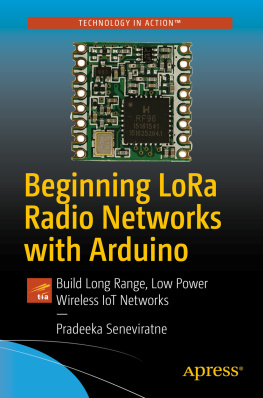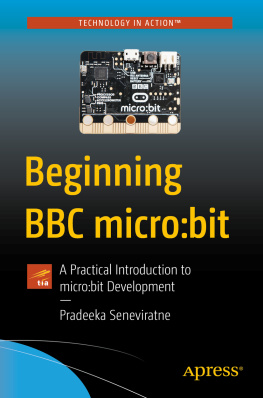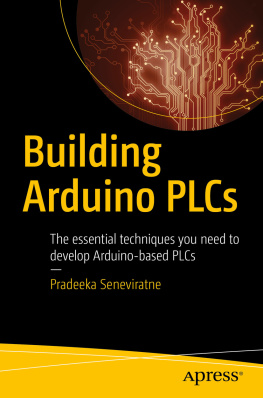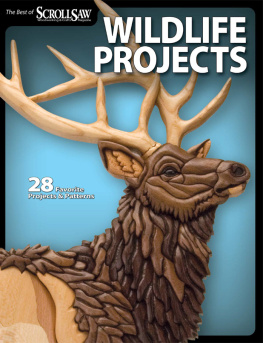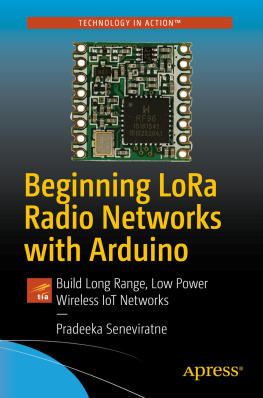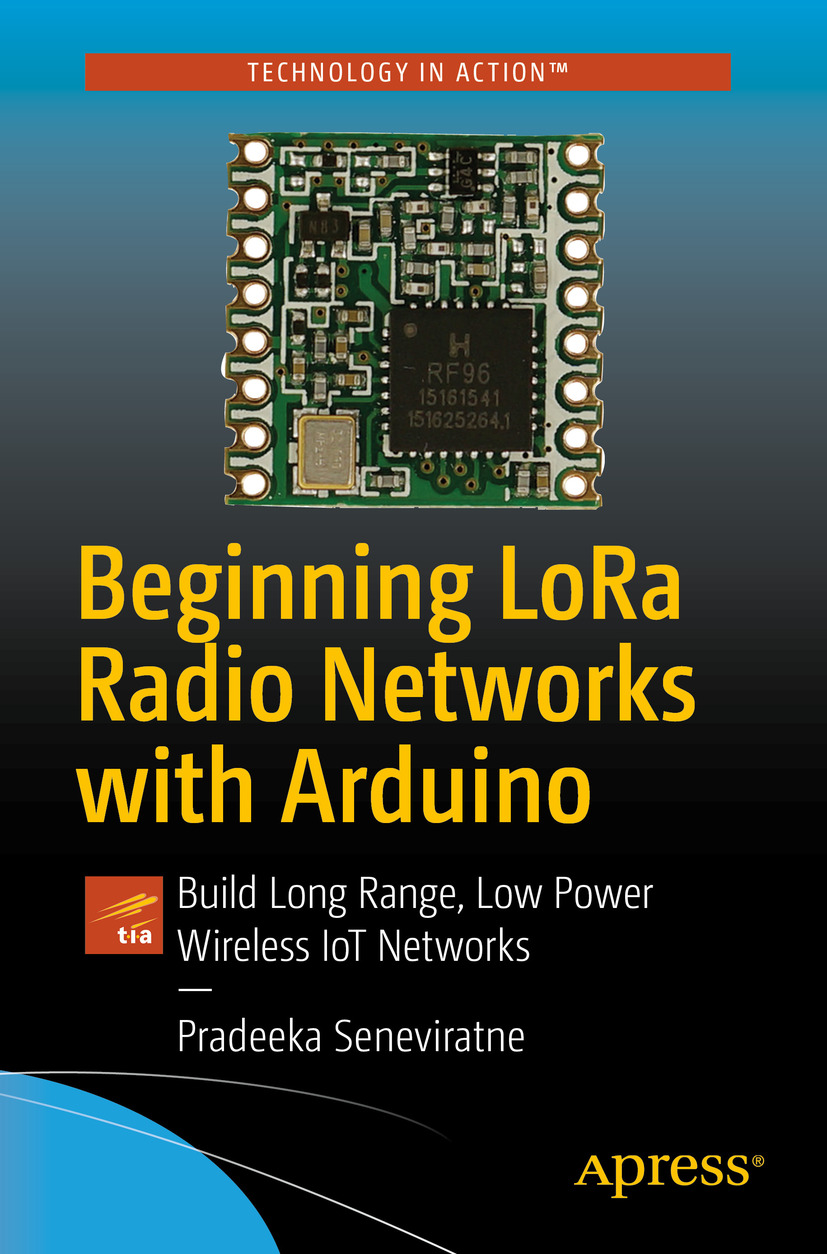Pradeeka Seneviratne
Beginning LoRa Radio Networks with Arduino Build Long Range, Low Power Wireless IoT Networks
Pradeeka Seneviratne
Mulleriyawa, Sri Lanka
Any source code or other supplementary material referenced by the author in this book is available to readers on GitHub via the books product page, located at www.apress.com/978-1-4842-4356-5 . For more detailed information, please visit www.apress.com/source-code .
ISBN 978-1-4842-4356-5 e-ISBN 978-1-4842-4357-2
https://doi.org/10.1007/978-1-4842-4357-2
Library of Congress Control Number: 2019932795
Pradeeka Seneviratne 2019
This work is subject to copyright. All rights are reserved by the Publisher, whether the whole or part of the material is concerned, specifically the rights of translation, reprinting, reuse of illustrations, recitation, broadcasting, reproduction on microfilms or in any other physical way, and transmission or information storage and retrieval, electronic adaptation, computer software, or by similar or dissimilar methodology now known or hereafter developed.
Trademarked names, logos, and images may appear in this book. Rather than use a trademark symbol with every occurrence of a trademarked name, logo, or image we use the names, logos, and images only in an editorial fashion and to the benefit of the trademark owner, with no intention of infringement of the trademark. The use in this publication of trade names, trademarks, service marks, and similar terms, even if they are not identified as such, is not to be taken as an expression of opinion as to whether or not they are subject to proprietary rights.
While the advice and information in this book are believed to be true and accurate at the date of publication, neither the authors nor the editors nor the publisher can accept any legal responsibility for any errors or omissions that may be made. The publisher makes no warranty, express or implied, with respect to the material contained herein.
Distributed to the book trade worldwide by Springer Science+Business Media New York, 233 Spring Street, 6th Floor, New York, NY 10013. Phone 1-800-SPRINGER, fax (201) 348-4505, e-mail orders-ny@springer-sbm.com, or visit www.springeronline.com. Apress Media, LLC is a California LLC and the sole member (owner) is Springer Science + Business Media Finance Inc (SSBM Finance Inc). SSBM Finance Inc is a Delaware corporation.
Table of Contents
About the Author and About the Technical Reviewer
About the Author
Pradeeka Seneviratne
is a software engineer with more than ten years of experience in computer programming and systems design. He is an expert in the development of Arduino and Raspberry Pibased embedded systems and is currently a full-time software engineer working with embedded systems and highly scalable technologies. Previously, Pradeeka worked as a software engineer for several IT infrastructure and technology servicing companies. He is the author of several books, including Beginning BBC micro:bit (Apress), Building Arduino PLCs (Apress), and Internet of Things with Arduino Blueprints (Packt).
About the Technical Reviewer
Fabio Claudio Ferracchiati
is a senior consultant and a senior analyst/developer using Microsoft technologies. He works at BluArancio S.p.A ( www.bluarancio.com ) as senior analyst/developer and Microsoft Dynamics CRM specialist. He is a Microsoft Certified Solution Developer for .NET, a Microsoft Certified Application Developer for .NET, a Microsoft Certified Professional, and a prolific author and technical reviewer. Over the past ten years, hes written articles for Italian and international magazines and co-authored more than ten books on a variety of computer topics.
Pradeeka Seneviratne 2019
Pradeeka Seneviratne Beginning LoRa Radio Networks with Arduino https://doi.org/10.1007/978-1-4842-4357-2_1
1. Introduction to LoRa and LoRaWAN
Pradeeka Seneviratne
(1)
Mulleriyawa, Sri Lanka
Radios are exciting pieces of hardware that can be used to build wireless communication links. Radios used to listen to voice and audio are known as receivers ; your home radio, for example, can only tune into and receive radio stations. Radios that can be used to transmit voice and audio are known as transmitters; radio stations use transmitters to broadcast programs. Radios that can do both (transmit and receive) are known as transceivers ; a walkie-talkie is an example of a two-way radio transceiver.
Transceivers use different types of modulations to send and receive data. The network coverage and data capacity are highly dependent on the frequency and type of modulation used. By using LoRa modulation, you can send data to long distances.
By reading this chapter, you will gain a basic understanding of LoRa, LoRaWAN, and LoRaWANs architecture.
What Is LoRa?
The LoRa spread spectrum is a patented modulation developed by Semtech ( https://www.semtech.com/ ) based on the chirp spread spectrum (CSS) modulation. LoRa (short for long range) provides long-range and low-power consumption, a low data rate, and secure data transmission. LoRa can be used with public, private, or hybrid networks to achieve a greater range than cellular networks. LoRa technology can easily integrate with existing networks and enables low-cost, battery-operated Internet of Things (IoT) applications.
Lets try to understand how the LoRa Spread Spectrum Modulation works. A plain radio signal carries no information besides the transmitter being left on. The signal must be modified in some way to convey information. There are several ways in which this can be done. Two of the most popular methods are to modify the amplitude and to modify the frequency.
Amplitude Modulation
In
amplitude modulation (AM), the signal strength (amplitude) of the carrier wave is varied in proportion to that of the message signal being transmitted. Figure shows how the information signal (modulating signal) is transformed into the modulated signal. First, the information signal is mixed with the carrier signal using a mixer (indicated with an X). The carrier signal has a constant frequency and amplitude, generated by an oscillator. During the transformation, the resulting modulated signal varies its amplitude, but the frequency remains constant. This simple modulation technique simplifies the transmitter and receiver design and is cost effective.
Figure 1-1
Amplitude modulation, including the information signal, carrier signal, and AM signal (source: https://en.wikipedia.org/wiki/Amplitude_modulation#/media/File:Illustration_of_Amplitude_Modulation.png by Ivan Akira, https://creativecommons.org/licenses/by-sa/3.0 )

